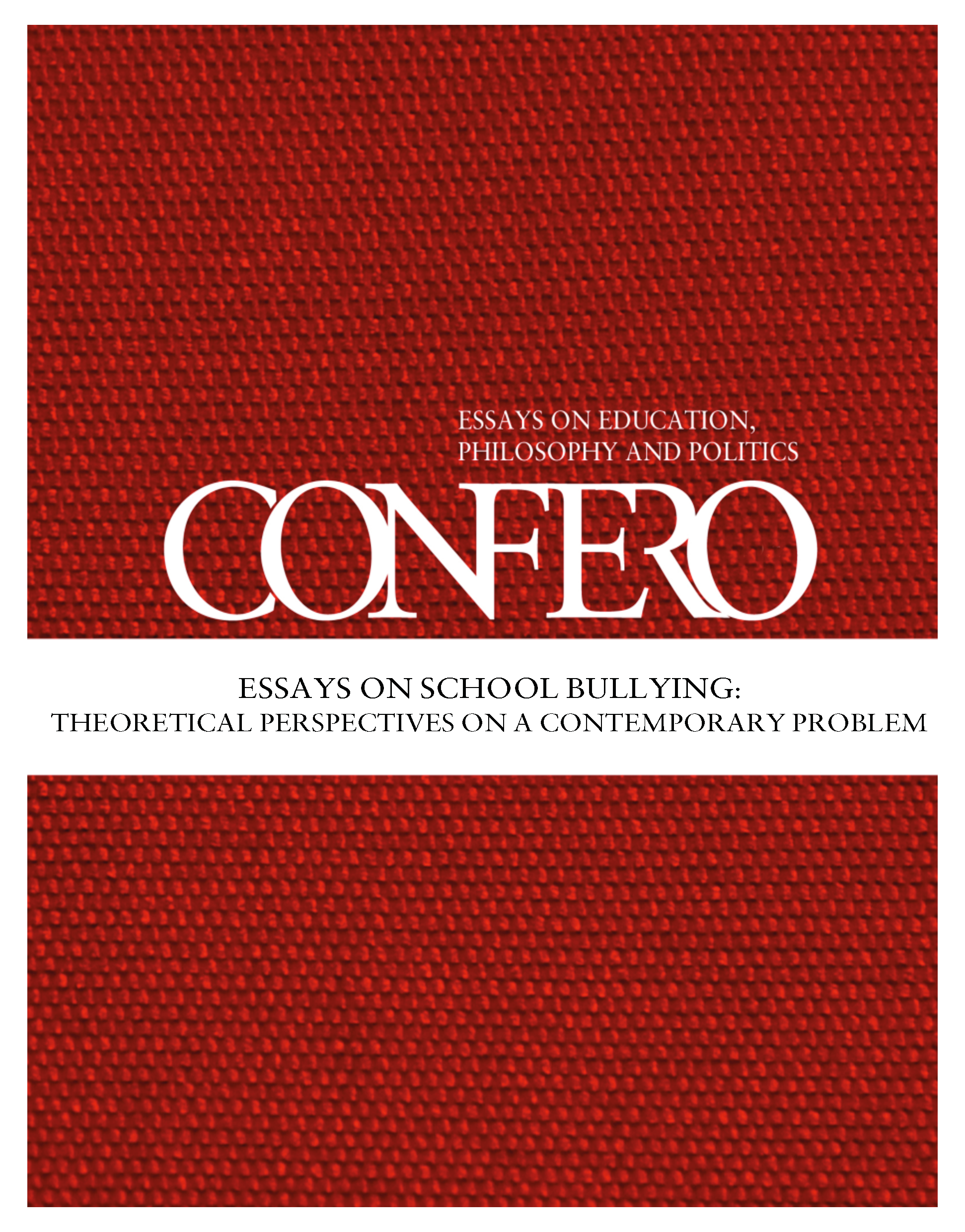Bullying and the philosophy of shooting freaks
DOI:
https://doi.org/10.3384/confero.2001-4562.150625Abstract
Not Available.
References
Alcinii, Daniele.”Waging the war against bullying”. Fairview Post 6 Nov. 2013.
Britzman, P. Deborah. ”Teacher education in the confusion of our times. Journal of Teacher Education 51.3 (2000): 200-205. doi: 10.1177/0022487100051003007
Burk, L. Frederic. “Teasing and bullying”. Pedagogical Seminary 4 (1897): 336 – 371. doi: 10.1080/08919402.1897.10534145
Dhamoon, Rita. “Identity / difference politics: How difference is produced, and why it matters”. Vancouver BC: UBC Press, 2009.
Duncan, Neil. Personal correspondence. 2012.
Harris, J. Monica.”Taking bullying and rejection (inter)personally: Benefits of a social psychological approach to peer victimization”. Ed. Monica J. Harris. New York, NY: Springer, 2009, 3-23.
Hazler, J. Richard, Carney, V. JoyLynn, and Granger, A. Douglas.”Integrating biological measures into the study of bullying”. Journal of Counseling and Development, 84 (2006): 298–307. doi: 10.1002/j.1556-6678.2006.tb00409.x
Jensen, Q. Sune. ”Othering, identity formation and agency”. Qualitative Studies, 2:2 (2011): 63-78.
Jeong, Seokjin and Lee, Hyan Byung. ”A multilevel examination of peer victimization and bullying preventions in schools”. Journal of Criminology, (2013): http://www.hindawi.com/journals/jcrim/2013/735397/
Hirsch, Lee, Lowen, Cynthia, Foudy, Susan and Waitt, Cindy. (Producers) & Hirsch, Lee (Director). Bully [Motion picture]. US: Cinereach, 2011.
McMullin, Ann Julue.”Understanding social inequality: Intersections of class, age, gender, ethnicity, and race in Canada.” Don Mills, ON: Oxford University, 2004.
Merrell, Kenneth W, Gueldner, Barbara A, Ross, Scott W and Isava, Duane M. ”How effective are school bullying intervention programs? A meta-analysis of intervention research.” School Psychology Quarterly, 23.1 (2008), 26-42. doi: 10.1037/1045-3830.23.1.26
Olweus, Dan. Bullying at school: What we know and what we can do. Cambridge, UK: Blackwell, 1993.
Smith, Steve. ”Exclusive: Agony of TV teenager filmed sneering during Susan Boyle’s debut.” Daily record 22 Nov. 2009.
Swidney, Neil. “The secret to stopping a bully? After decades of research, no one has yet found a way to reduce bullying in US schools. But in the shadows, you just might find the solution.” Boston Globe Sunday Magazine, 2 May 2010, pp. 20-23, 32-37.
Tartaglione, Nancy. ”Fox Searchlight to develop Susan Boyle story based on musical ‘I Dreamed a Dream.’” Deadline, Nov. 23, 2012.
Walton, Gerald. ”The problem trap: Implications of Policy Archaeology Methodology for anti-bullying policies.” Journal of Education Policy, 25.2: (2010), 135 – 150.
Walton, Gerald. “Spinning our wheels: Reconceptualizing bullying beyond behaviour-focused approaches.” Discourse: Studies in the Cultural Politics of Education, 32.1 (2011): 131 – 144. doi: 10.1080/01596306.2011.537079
Walton, Gerald and Niblett, Blair. “Investigating the problem of bullying through photo elicitation.” Journal of Youth Studies, 16. 5 (2013): 646-662. doi: 10.1080/13676261.2012.733810
Downloads
Published
Issue
Section
License
Copyright (c) 2015 Gerald Walton

This work is licensed under a Creative Commons Attribution 4.0 International License.
As Confero is an open access journal, this means that anyone who can access the Internet can freely download and read the journal. There are no commercial interests for Linköping University Electronic Press or Confero in publishing the journal.
The core idea of open access is that copyright remains with the author(s). However, we publish with the agreement of the author that if she or he decides later to publish the article elsewhere, that the publisher will be notified, prior to any acceptance, that the article has already been published by Confero.
When publishing with Confero, it is with the agreement of the author that if they make their article available elsewhere on the internet (for example, on their own website or an institutional website), that they will do so by making a link to the article as published in Confero using the Digital Object Identifier (DOI) number of the article and acknowledge in the text of the site that the article has been previously published in Confero.
As evident by the markers on our homepage, Confero falls under the Creative Commons licence abbreviated BY. This means that we allow others to use, spread and elaborate on the published articles, as long as they acknowledge who published it and where it was originally published.



